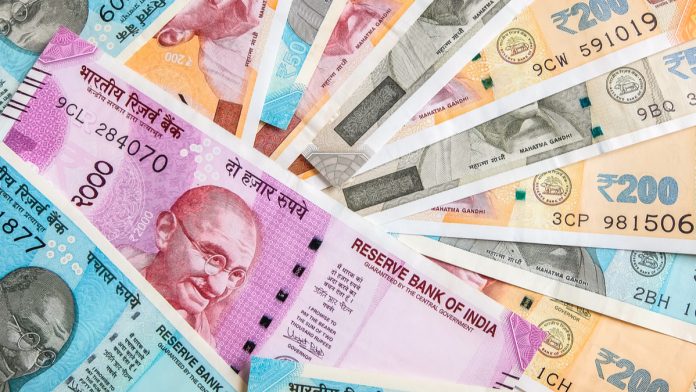- Indian Rupee (INR) looks to Friday’s rate decision
- Indian business activity grows at the slowest pace
- US Dollar (USD) falls versus major peers
- US ADP payrolls are due
The US Dollar Indian Rupee (USD/INR) exchange rate is holding steady after losses yesterday. The pair fell -0.13% in the previous session, settling on Tuesday at 83.32. At 12:00 UTC, USD/INR trades -0.01% at 83.32 and trades from 83.29 to 83.37.
The Indian rupee is holding steady after data yesterday showed that the service sector in India expanded at its slowest pace in a year in November. The S&P global services PMI slipped to 56.9 in November, down from 58.4 in October, as output and new business expansion remained weak.
Meanwhile, the composite PMI fell to 57.4 last month, down from 58.4 in October, marking the lowest level this year.
Attention now turns to the Reserve Bank of India Monetary Policy Committee meeting, which starts today with the announcement expected on Friday. The RBI is expected to leave interest rates on hold but maintain a hawkish stance owing to upbeat growth forecasts and upside inflation risks in the near term due to food prices.
The US Dollar is steady versus the Rupee but is falling against its major peers. The US Dollar Index, which measures the greenback versus a basket of major currencies, trades -0.05% at the time of writing at 104.01, after two days of gains.
The U.S. dollar is slipping as investors look ahead to more jobs data. Today, the focus is on ADP private payrolls, which are expected to rise to 130,000 in November, up from 113,000 in October, which was a lower-than-forecast reading.
The data comes after yesterday’s jolts job openings which fell by more than expected showing 8.7 million job openings down from 9.55 million.
Weaker-than-expected jobs data is fueling expectations that the Federal Reserve has done from interest rates and could start cutting rates as soon as March next year.
The data comes ahead of Friday’s nonfarm payroll report, which is the closely watched jobs data, and ahead of next week’s FOMC meeting, where the market is almost fully pricing in the Federal Reserve leaving interest rates unchanged.





